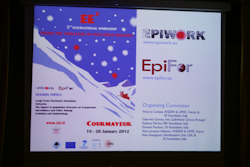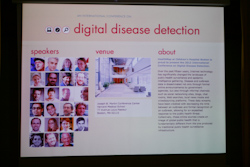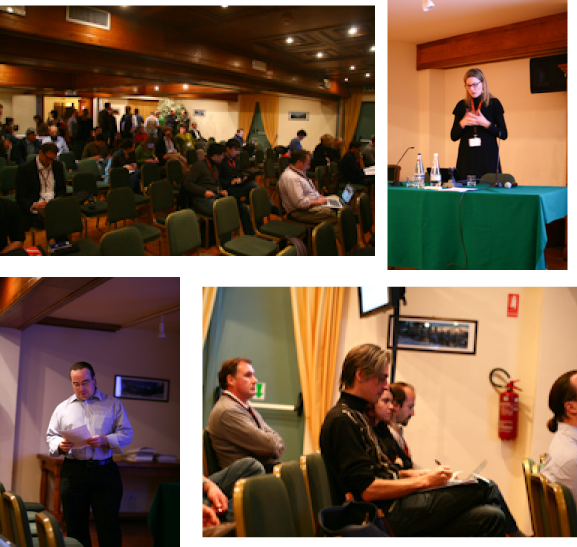outreach
EE² - Epiwork/Epifor 2nd International Workshop - day 1 Jan. 18, 2012
The first day of the Workshop featured some outstanding talks by leading medical epidemiologists and modelers. The talks were organized in four sessions: two morning sessions and two afternoon sessions.
 The morning sessions were devoted to talks about surveillance methods and their use to support public health policies. In particular, some of the talks focused on the role of new web based surveillance systems in providing timely and accurate data on emerging diseases. John Edmunds, from the London School of Hygiene and Tropical Medicine, and Peter White, from Imperial College, presented the results obtained by different surveillance systems in the UK during the 2009 H1N1 pandemic and their implications for the UK public health organization. John Brownstein, from Harvard University, presented some recent and innovative approaches to outbreak detection that make extensive use of digital data and web based systems.
The morning sessions were devoted to talks about surveillance methods and their use to support public health policies. In particular, some of the talks focused on the role of new web based surveillance systems in providing timely and accurate data on emerging diseases. John Edmunds, from the London School of Hygiene and Tropical Medicine, and Peter White, from Imperial College, presented the results obtained by different surveillance systems in the UK during the 2009 H1N1 pandemic and their implications for the UK public health organization. John Brownstein, from Harvard University, presented some recent and innovative approaches to outbreak detection that make extensive use of digital data and web based systems.
 The first afternoon session featured two talks about the integration of epidemic modeling and public health planning. Babak Pourbohloul, from the British Columbia Center for Disease Control, presented some recent results on modeling epidemic spreading in Canada using data-driven network models. Caterina Rizzo, from the Istituto Italiano di Sanità, illustrated some results of the Italian surveillance system for different diseases, ranging from the H1N1 pandemic to measles, and the use of surveillance data to inform mathematical epidemic models.
The first afternoon session featured two talks about the integration of epidemic modeling and public health planning. Babak Pourbohloul, from the British Columbia Center for Disease Control, presented some recent results on modeling epidemic spreading in Canada using data-driven network models. Caterina Rizzo, from the Istituto Italiano di Sanità, illustrated some results of the Italian surveillance system for different diseases, ranging from the H1N1 pandemic to measles, and the use of surveillance data to inform mathematical epidemic models.
The last afternoon session featured three talks about the tracking of social contacts and interactions among people and the use of such data in epidemic modeling. Jacco Wallinga, from Utrecht Medical University, presented some new data obtained by the POLYMOD project about the different mixing patterns between sexes and their implications for epidemic modeling, in particular for measles epidemics. Alain Barrat, from Marseille University, illustrated how RFID tags can be used to track social contacts in real time. Eventually, Markus Schwehm, from ExploSYS, illustrated the effects of age dependent contact patterns in epidemic modeling.
 The Workshop program concluded at 9pm with a dinner talk by Don Olson, from the International Society for Disease Surveillance. He gave an entertaining and provocative talk about the role of new technologies data in surveillance and the future perspectives of surveillance systems.
The Workshop program concluded at 9pm with a dinner talk by Don Olson, from the International Society for Disease Surveillance. He gave an entertaining and provocative talk about the role of new technologies data in surveillance and the future perspectives of surveillance systems.
Check out the program of the Workshop here!

Posts by category: awards/honors, news, outreach, publications, research, talks, team news



